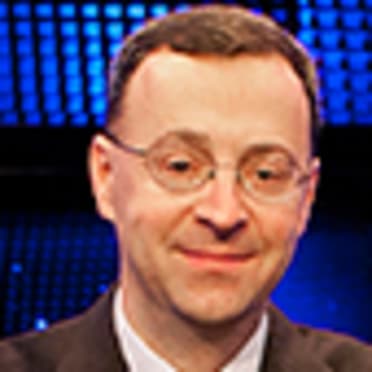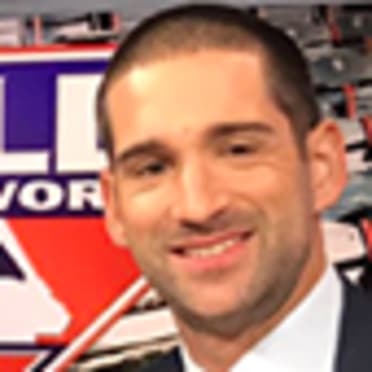Here is every club's best value Draft pick ever
Not every high-profile MLB Draft prospect will become a star in the Major Leagues, and a player doesn't have to be picked in the first round to become a Hall of Famer. In fact, a look back at the history of the Draft suggests that some of the sport’s greatest all-time players were afterthoughts when they were drafted.
With that in mind, our MLB Pipeline crew decided to dig through previous Drafts to determine the most valuable pick ever for all 30 teams, taking into account the round in which that player was drafted and the player he would become as a Major Leaguer. Because while most teams have Hall of Famers or All-Stars who were top prospects as amateurs, every club has landed a surprise star later on in the Draft:
AMERICAN LEAGUE EAST
Blue Jays: Jeff Kent (20th round, 1989)
The Cal product reached the Majors with Toronto in 1992 but was dealt to the Mets for David Cone that August. Kent’s best years came with the Giants (1997-2002), a stretch during which he was a three-time All-Star and the 2000 NL MVP. Altogether, Kent was a five-time All-Star, a four-time Silver Slugger winner and a 55.4-WAR player during his 17-year career.
Yankees: Andy Pettitte (22nd round, 1990)
With apologies to Don Mattingly (19th round, 1979), Pettitte was a later pick and had a more productive career. The draft-and-follow rule allowed New York to select him out of a Texas high school and control his rights when he attended San Jacinto (Texas) JC the next spring, with area scout Joe Robison ultimately signing him for $80,000. The three-time All-Star won 256 games in the big leagues and five World Series with the Yankees -- four as a teammate of fellow 1990 draft-and-follow Jorge Posada, a 24th-rounder from Calhoun (Ala.) CC who signed for $30,000 the next spring.
Red Sox: Wade Boggs (7th round, 1976)
Most scouts wrote Boggs off as a Florida high schooler because he lacked power and speed, but Boston's George Digby knew hitters and signed him away from a football scholarship to kick at South Carolina for just $7,500. Boggs fought the same rap in pro ball, spending six years in the Minors despite hitting .318, before finally getting a shot and winning five batting titles and a World Series title while collecting 3,010 hits and 12 All-Star selections en route to Cooperstown. The Red Sox have excelled at finding later-round hitters since the draft began, with Mookie Betts (5th round, 2011) the latest in a long line that also includes Amos Otis (5th, 1965), Cecil Cooper (6th, 1968), Ben Oglivie (11th, 1968), Dwight Evans (5th, 1969), Mike Greenwell (3rd, 1982), Brady Anderson (10th, 1985), John Valentin (5th, 1988), Jeff Bagwell (4th, 1989), Kevin Youkilis (8th, 2001), Josh Reddick (17th, 2006) and Anthony Rizzo (6th, 2007)
Rays: James Shields (16th round, 2000)
Selected out of California prep ranks in 2000, Shields made his big league debut six years later and was the driving force of the Rays’ staff in ‘08, when the team won the AL pennant before falling to the Phillies in the World Series. He made his only All-Star appearance in 2011, also finishing third in the AL Cy Young race, and, overall, Shields racked up 145 wins and 30.2 WAR in 13 seasons.
Orioles: Steve Finley (13th round, 1987)
Originally an 11th-round pick by Atlanta in 1986, Finley opted to return to Southern Illinois University and became the Orioles’ 13th-rounder the following year. Finley scuffled during his two big league campaigns in Baltimore (1989-90), batting .254 with five homers in 223 games, but eventually developed into a power-speed threat who totaled 304 homers and 320 steals while producing a 44.3 WAR in 19 seasons. Along the way, Finley garnered All-Star honors twice, was a five-time Gold Glove winner and won the World Series with Arizona in 2001.
AMERICAN LEAGUE CENTRAL
Tigers: John Smoltz (22nd round, 1985)
Traded to the Braves in 1987 for Doyle Alexander, Smoltz became a World Series winner (1995), a Cy Young Award winner (‘96) and a Hall of Famer (2015) during a tremendous 21-year career. He also made eight All-Star teams, both as a starter and a closer, and he’s the only pitcher in history to record at least 200 wins and 100 saves.
Indians: Jim Thome (13th round, 1989)
Cleveland had one of the best Drafts ever in 1989, highlighted by landing a kid who would slam 612 home runs and make the Hall of Fame in the 13th round. While most scouts thought the future five-time All-Star was just an awkward-looking shortstop at Illinois Central JC, the Indians' Tom Couston saw bat speed and projectable power and signed hm for $15,000. Cleveland landed 10 other big leaguers in the 1989 Draft, including Brian Giles (17th round), Curt Leskanic (8th) and Jerry Dipoto (3rd). Hall of Fame note: The Indians stole Dennis Eckersley in the third round in 1982.
Royals: Bret Saberhagen, RHP (19th round, 1982)
Taken from the California high school ranks, it took Saberhagen less than two years to reach Kansas City, making his big league debut at age 19. He then went on to produce a 58.8 WAR, win two Cy Young Awards and go to four All-Star Games.
Twins: Brad Radke (8th round, 1991)
A Tampa area high school draftee, Radke made his big league debut in 1995 and spent 12 years as a Major Leaguer, all with the Twins. He was extremely durable, making 28 or more starts in all but one of those seasons and finishing with a WAR of 45.4.
White Sox: Mark Buehrle (38th round, 1998)
Buehrle only threw in the mid-80s at Jefferson (Mo.) CC but Chicago scout John Kazanas loved his feel for pitching and got him as a draft-and-follow in the 38th round, singing him for $150,000 after he returned to the Vikings for his sophomore season (when he would face off against Maple Woods, Mo., CC slugger Albert Pujols). Buehrle would win 214 games, four Gold Gloves and a World Series title, throw two no-hitters (including a perfect game) and earn five All-Star berths despite being the 1,139th overall choice. Hall of Fame note: The White Sox grabbed Rich Gossage in the ninth round in 1970.
AMERICAN LEAGUE WEST
Astros: Kenny Lofton (17th round, 1988)
Lofton intrigued scouts as an Indiana high schooler but also was a star point guard destined to play on four NCAA tournament teams at Arizona. He got just one college at-bat while in Tucson, but former Wildcats infielder and then-Astros scout Clark Crist loved Lofton's speed enough to advocate for him. A six-time All-Star who batted .299 with 629 extra-base hits and 622 steals in the big leagues, he's one of just two athletes to play in the NCAA Final Four and the World Series -- along with fellow Washington High (East Chicago, Ind.) product Tim Stoddard.
Angels: Howie Kendrick (10th round, 2002)
Kendrick was a little-known junior college product in 2002 who opened some eyes when he hit .318 in his pro debut and then .368 the following summer in the Pioneer League. He hasn’t stopped hitting since en route to a 14-year big league career with over 1,700 hits, a 32.9 WAR and now, a World Series title.
Athletics: Rickey Henderson (4th round, 1976)
The A’s took Henderson out of their own backyard (Oakland Technical High School) and he was in the big leagues at age 20, in 1979. All he did was go on to win an MVP, two World Series, three Silver Sluggers and be a 10-time All-Star. His Hall of Fame career included over 3,000 hits, nearly 300 homers and over 1,400 stolen bases resulting in a WAR of 111.2.
Mariners: Raul Ibanez (36th round, 1992)
A 54th-round pick of the Rangers in 1991, Ibanez spent a second year at Miami-Dade College before joining the Mariners the next June. He didn’t really become a big league regular until he joined the Royals in 2001 at age 28, but played into his 40s, finishing with over 2,000 hits and a 20.4 WAR.
Rangers: Ian Kinsler (17th round, 2003)
Drafted out of high school and junior college, Kinsler fell off the scouting radar when he couldn't beat out Dustin Pedroia for Arizona State's shortstop job in 2002 and played through a stress fracture in his foot after transferring to Missouri in 2003. Texas scout Mike Grouse loved his intensity as much as his tools and signed Kinsler for $30,000. He took off after getting stronger, reaching Arlington by 2006 and collecting four All-Star nods, two Gold Gloves and a World Series ring along with 257 homers in a still-active career.
NATIONAL LEAGUE EAST
Braves: Brett Butler (23rd round, 1979)
Butler spent one year at Arizona State, but didn’t make the varsity team, then transferred to Southeastern Oklahoma State before being drafted by the Braves. His speed and defense resulted in a 49.7 WAR, 2,375 hits and 558 stolen bases in a 17-year Major League career.
Phillies: Ryne Sandberg (20th round, 1978)
The Phillies didn’t reap much benefit from Sandberg, trading him to the Cubs before the 1982 season just after he made his big league debut. But they do get credit for drafting him out of the Pacific Northwest high school ranks as he went on to have a Hall of Fame career with a 68 WAR.
Marlins: Josh Johnson (4th round, 2002)
Johnson entered 2002 as a potential first-round pick but saw his velocity fluctuate all spring, dipping to the mid-80s at times, though he sat at 90-91 mph while pitching a complete-game victory in the Oklahoma 6-A state championship game. Marlins scout Darrell Brown landed him for $300,000 and while Johnson had trouble staying healthy, he did make a pair of All-Star teams, lead the National League with a 2.30 ERA in 2012 and post the highest WAR (25.7) for any pitcher in franchise history.
Mets: Nolan Ryan (10th round, 1965)
While Ryan was the Mets’ 10th-round pick In the Draft’s inaugural year -- there were multiple picks in every round starting in the eighth -- it wasn’t until 1972, following a trade to the Angels, that the right-hander came into his own. During an 83.5-WAR, Hall of Fame career that spanned 27 years, Ryan, who retired after his age-46 season, won 324 games, tossed seven no-hitters and racked up more strikeouts (5,714) than any hurler in baseball history.
Nationals: Andre Dawson (11th round, 1975)
Taken out of Florida Agricultural and Mechanical University, the Hawk was the 1977 NL Rookie of the Year with Montreal and the '87 NL MVP with the Cubs, when he led the Majors with 49 homers and 137 RBIs. He would go on to play 21 seasons, hitting 438 homers and winning eight Gold Gloves during a Hall of Fame career.
NATIONAL LEAGUE CENTRAL
Brewers: Lorenzo Cain (17th round, 2004)
Cain didn’t reach the Majors until 2010 and was shipped off to Kansas City after the season in the Zack Greinke trade. He showed steady improvement early in his Royals career before breaking out in 2015, when he finished third in the AL MVP voting and led Kansas City to a World Series title. He finished seventh in the NL MVP race in 2018, his first year in Milwaukee after signing a four-year pact as a free agent, and then finally won his first Gold Glove this past season. Altogether, Cain has been a 36.9-WAR player in 10 seasons.
Cardinals: Albert Pujols (13th round, 1999)
The Maple Woods CC (Kansas City, Mo.) product kicked off his career by winning the 2001 NL Rookie of the Year. Since then, Pujols has been a three-time MVP, a 10-time All-Star, a batting champion and a two-time World Series champ while totaling 100.3 WAR across 19 seasons. What’s more, the 39-year-old, future Hall of Famer is one of four players (Hank Aaron, Willie Mays and Alex Rodriguez) in baseball history to reach the 3,000-hit (3,202), 600-homer (656) plateau.
Cubs: Mark Grace (24th round, 1985)
Undrafted out of high school and two years at Saddleback (Calif.) CC, Grace transferred to San Diego State in 1985 and hit .395 -- albeit with just two homers. His lack of power dropped him to the 24th round and the Cubs, who initially offered him $5,000 to sign. A strong summer in the Alaska League got him a $20,000 bonus, launching a career that included 2,445 hits, four Gold Gloves, three All-Star selections and a World Series championship.
Reds: Ken Griffey (29th round, 1969)
Sure, his kid gets most of the attention, but Senior Griffey was a very solid player in his own right. Taken from the Southwestern Pennsylvania high school ranks, he ended up being a vital cog of the Big Red Machine and finished his career with a WAR of 34.5, thanks to more than 2,100 hits, 152 homers and 200 steals over 19 years.
Pirates: Dave Parker (14th round, 1970)
The Cincinnati native really established himself in Pittsburgh in 1975, finishing third in MVP voting that year. He won that award in 1978 then had a huge hand in the “We Are Family” championship run the following year. Parker made seven All-Star teams, won two batting titles and three Silver Slugger Awards, finishing with a WAR of 40.1.
NATIONAL LEAGUE WEST
D-backs: Paul Goldschmidt (8th round, 2009)
After turning down the Dodgers as a 49th-round pick in 2006, Goldschmidt headed to Texas State University and became the D-backs’ eighth-rounder three years later. He reached the Majors two years later, launching an accolade-filled career that’s seen him club 243 home runs en route to a 43.1 WAR in nine seasons. The D-backs ultimately traded Goldschmidt to St. Louis after the 2018 season, though not before he made six straight National League All-Star teams, won three Gold Gloves and recorded three Top 3 finishes in the MVP Award voting.
Padres: Jake Peavy (15th round, 1999)
A 15th-round pick out of the Alabama prep ranks, Peavy was the 2007 NL Cy Young Award winner and garnered All-Star honors twice during his Padres tenure. The right-hander was dealt to the White Sox during the 2009 season, leading to his third ASG appearance in ’12, and recovered from a career-threatening right lat injury to complete a 15-year career. Peavy was worth 37.5 WAR overall -- 24.8 of which he accrued as a Padre.
Rockies: Matt Holliday (7th round, 1998)
It took Holliday almost six years to make it to the big leagues, but boy the wait was worth it for the Oklahoma high school product. The seven-time All-Star won four Silver Slugger Awards, an NLCS MVP with the Rockies in 2007 and a World Series title with the Cardinals in 2011. He just wrapped up a 15-year career in 2018, finishing with over 2,000 hits and more than 300 homers adding up to a 44.8 WAR.
Dodgers: Mike Piazza (62nd round, 1988)
Scouts showed no interest in Piazza as a Pennsylvania high schooler and didn't warm to him after he hit .364 at Miami-Dade North Community College as a sophomore in 1988. Famously drafted as a favor to his godfather, then-Dodgers manager Tommy Lasorda, he became the lowest pick (1,390th overall) ever to make the Hall of Fame. One of the best offensive catchers in baseball history, Piazza set a record for home runs at the position (396 of his 427 overall) and made 12 All-Star teams.
Giants: Jack Clark (13th round, 1973)
While most teams liked Clark more as a pitcher when they evaluated him as a California high schooler, legendary Giants scout George Genovese projected him as a slugger and proved correct after signing him for $10,000. Clark pitched briefly in his pro debut but became a full-time outfielder by the end of 1973, hitting 340 homers in the Majors and getting selected to four All-Star teams.


